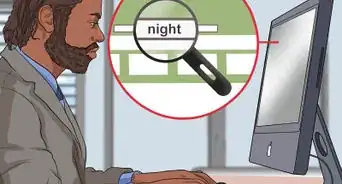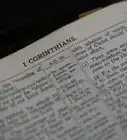X
wikiHow is a “wiki,” similar to Wikipedia, which means that many of our articles are co-written by multiple authors. To create this article, 9 people, some anonymous, worked to edit and improve it over time.
This article has been viewed 32,612 times.
Learn more...
The purpose of this article is to give some practical advice on reading the King James Bible (KJB). There are many exhortations to read this work of majesty, but not much practical advice on how to go about it. With this article, you can hopefully gain some familiarity with the structure and conventions of the King James Bible, thereby making it more accessible.
Steps
-
1Read at the correct pace. Read the KJB at a moderate pace; reading too slowly may cause you to lose the connections in thought, that the author intended you to understand.
-
2Pause properly at the punctuation. Pausing properly at the punctuation will increase your understanding of the text. While reading: Commas (,) indicate a short pause. Periods (.) indicate a full stop. Colons (:) indicate a long pause slightly shorter in length than a period. Semicolons (;) indicate a pause longer than a comma but shorter than a colon. Pause length summary (greatest to least): Period > Colon > Semicolon > Comma.Advertisement
-
3Know what capitalization means. Capitalization in the KJB, aside from proper nouns, indicates the beginning of a sentence, the beginning of a verse (even mid sentence), and the beginning of a quotation (The King James Bible does not have quotation marks); as in the first quote in the King James Bible from Genesis 1:3: And God said, Let there be light: and there was light. The KJB does not, however, indicate the end of a quotation; therefore, some interpretation is required for determining the end of a quote.
-
4Define unknown terms. When you come across an unfamiliar term while reading the KJB, you can use a dictionary like Noah Webster’s 1828 “American Dictionary of the English Language.” Webster was a master linguist. He used the KJB to teach in schools and he was thoroughly familiar with the archaic terminology. He uses scripture from the KJB as examples in many of his definitions. This edition of Webster’s dictionary is still available for sale in print and can be accessed free on some websites.
-
5Buy a high quality Bible edition. A beautifully bound edition of the King James Bible will enhance your reading experience. One good choice is the Cambridge Bibles; the Cameo Edition in particular, due to its portable size and dark readable type. There is nothing like the smell of Cambridge Bible leather, which in itself can draw you back to reading it. Alternatively, you can read the Local Church Bible Publisher’s 115E1B edition, which is identical to the Cambridge Cameo Edition.
-
6Utilize a Bible reading plan. Reading the Bible without a plan can be overwhelming and discouraging; choose a Bible reading plan and stick with it. There are hundreds of free Bible reading plans to choose from.
- One option is a genre-based Bible reading plan, which breaks up the readings into these genres: Law, Prophets, Poetry, Old Testament history, New Testament history, and the Epistles. This type of system offers variety and will prevent boredom and disinterest and will keep you looking forward to your next reading. Both the “Professor Grant Horner’s Bible Reading System” or “The Bible Reading Plan for Slackers and Shirkers” are available free online.
Advertisement
Community Q&A
-
QuestionHow do I memorize Bible pages?
 Community AnswerBy reading a single verse over and over again until you have memorized it, then add another verse and repeat the two verses over and over again. Then add the third verse and say all of them over and over until you have learned a section. You may find writing a section repeatedly useful instead, everyone has different methods of memorizing things.
Community AnswerBy reading a single verse over and over again until you have memorized it, then add another verse and repeat the two verses over and over again. Then add the third verse and say all of them over and over until you have learned a section. You may find writing a section repeatedly useful instead, everyone has different methods of memorizing things. -
QuestionCan one use any Bible version?
 Lacey GilmourCommunity AnswerThere are a lot of different bible versions. I personally love using NIV, NLT, and ESV because each says the same thing just differently. The choice depends on what you like. If you like old fashioned text, try KJV or NKJV. If you like things in almost black and white, so to speak, the ESV and NLT are written so it's easy to understand. Try reading different versions and see what you prefer. The Bible app can help you because you can pick a starting version and there is a way to compare other versions.
Lacey GilmourCommunity AnswerThere are a lot of different bible versions. I personally love using NIV, NLT, and ESV because each says the same thing just differently. The choice depends on what you like. If you like old fashioned text, try KJV or NKJV. If you like things in almost black and white, so to speak, the ESV and NLT are written so it's easy to understand. Try reading different versions and see what you prefer. The Bible app can help you because you can pick a starting version and there is a way to compare other versions.
Advertisement
About This Article
Advertisement

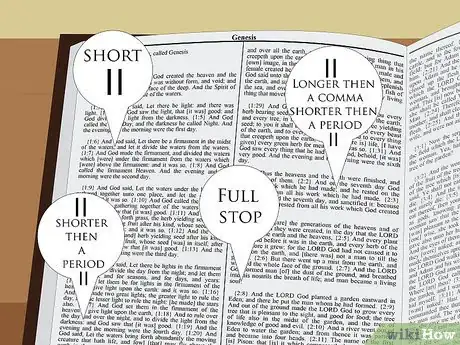
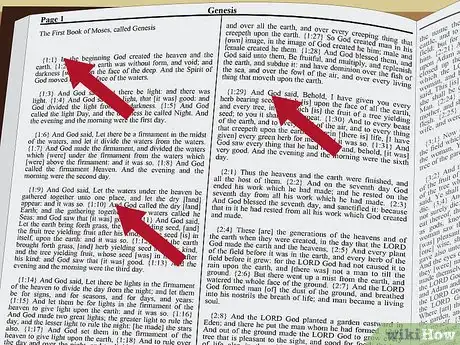
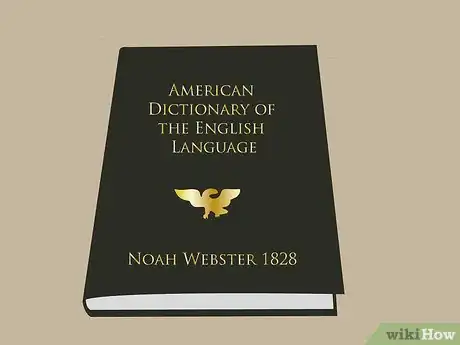





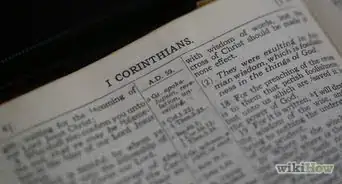





-Step-9.webp)
